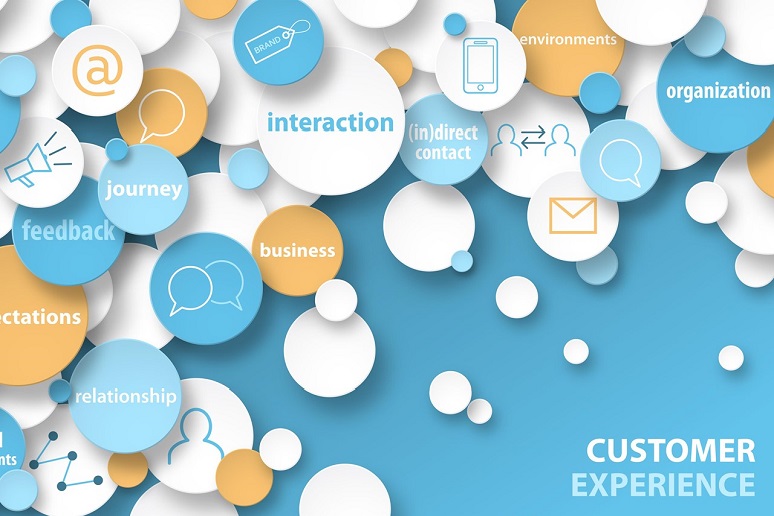Business owners continue to grapple with mounting losses and customer abandonment as a result of the COVID-19 recession. Critical to the survival of these businesses is the reimagination of what it means to deliver great customer care, experiences, and services that matter most to consumers.
The pandemic has proven to be a real test for customer contact centers, especially those of traditional brick and mortar industries that must adapt to new requests of a forced online consumer base. Whether dealing with everyday needs such as groceries, pharmacy visits, or services such as medical appointments and license renewals, everything is getting retooled for a touchless, social experience.
The way a company chooses to interact with their online customers can leave a lasting impression; the businesses that work to meet the new needs of their consumers with empathy, care, and concern will be the ones that come out of this recession stronger. Here’s what companies should keep in mind to deliver quality customer care and experience.
Focus On Shifting Customer Preferences
Keeping a real-time pulse on changing customer preferences, especially during trying times, is essential. Safety has been one of the biggest concerns on consumers’ minds over the past few months. Businesses must prepare to deliver to their customers what matters most when it matters most. Right now, that means providing consistent, top-notch customer service and engagement through various avenues such as phone, online, or chat.
In a
recent Mitel consumer study, we found that U.S. consumers typically view both personal touch and direct engagement as being key to the customer experience. Fifty-five percent of respondents shared they prefer to engage with customer service teams by phone. While 35%prefer engagement via online channels. However, with COVID-19 impacting customers around the world, we’ve seen an increased percentage of customers who prefer contactless, self-resolution experiences. For example, over half of U.S. consumers shared they’ve been using online customer services more during COVID-19. But of those consumers, around the same number shared that they think organizations need to introduce tools that are easier to use.
There has also been significant investment in the digital transformation of customer experience (CX) for many brands –but there still seems to be a major lag in the capabilities that businesses offer. Traditional channels, for example, like telephone and email, are still most typically used by consumers at 59% and 50% respectively, though not necessarily always preferred. This research tells us that while contact center managers need to think carefully about prioritizing resources during the pandemic and creating more seamless online experiences, legacy channels shouldn’t be abandoned.
Observe Companies That Do CX Right
Companies that can grow and survive through difficult times are the ones that create those “feel good” customer experiences. Bottom line—customers are looking for easier and more convenient ways to navigate the new normal.
When it comes to CX, Amazon has shown the world what brilliant looks like, and any business should be looking to them to see how they can replicate that success. One of the main reasons for this is due to its commitment to provide a topline customer experience. Customer service is at the very core of its business model, and a
large majority of consumers (89%) are more likely to buy products from Amazon than other e-commerce sites.
With a range of helpful tools that customers can use to track packages and to quickly exchange or return items, along with its famous one-day shipping option, customers get what they need fast. The process is very simple. Speedy and effective service across a range of channels allows customers to feel prioritized and valued.
Mitel found in its survey that 26% feel that organizations haven’t yet made investments in the latest technologies.
Smaller companies may lack the resources that a tech giant like Amazon has. But they can and should assess what companies like Amazon are doing and find different ways to implement similar customer service priorities into their own strategy. Having clear goals, values, priorities, and listening to what customers genuinely want and care about is key—especially as consumers continue to move from in-person to digital, where choices become endless.
Be Empathetic
During this tumultuous time, customers are experiencing increased levels of stress, anxiety, and fear. They’re also increasingly looking for trustworthy brands that can help make their lives easier. Taking the time to build relationships with your customers will not go unnoticed.
Investing in the right technology and ensuring customer contact center representatives get trained properly (even while working remotely) to provide friendly and knowledgeable service will go a long way. That is true now, and will continue to ring true as we move through phases of reopening and eventually into a post-COVID-19 world. According to
Gartner, the growth of a business throughout 2020 will depend as much on customer process design as it does on marketing activity. Essentially, those who build and design their customer service around empathy and understanding and take the time to recognize what it is that makes customers tick will experience significant growth.
Nike, for example, has eliminated its subscription fee for streaming workout services, as gyms closed around the country. Meanwhile, the Walt Disney Company released content ahead of schedule to entertain children stuck at home. Finding ways to connect with consumers as they’re homebound is priceless. When it comes to customer service, the good doesn’t necessarily outweigh the bad, according to Mitel; a good customer experience increases consumer satisfaction by 36%, but a bad experience will cause 47% of consumers to stop using an organization’s services.
That’s why now, more than ever, companies must listen to what consumers value most, and they must take these learnings into the post-COVID world. It’s not about having the most advanced or current technology or even providing perks as we all face this crisis head-on. Instead, it’s making sure your company has the technology and processes in place that are relatable and easy to use. It’s knowing how to reach your customers effectively, providing them with the channels that enable them to engage with you, and most importantly, at least for now, training call-center agents to manage emerging needs.










